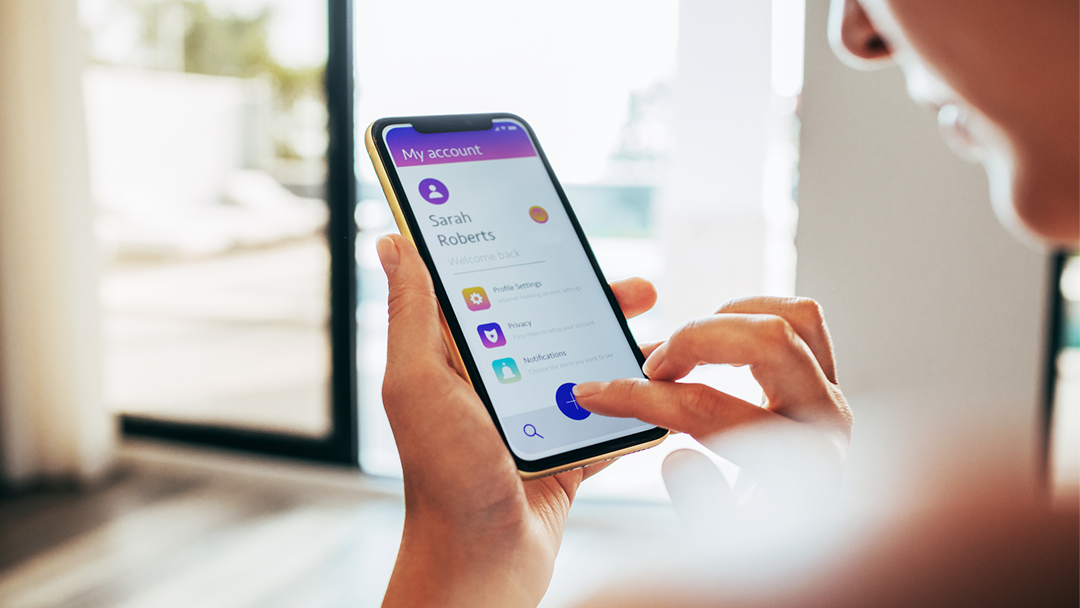Article
Leveraging RWE to support market access decision-making

Regulators, payers, and pharmaceutical companies are increasingly looking to real-world evidence (RWE) to support their decisions about new products. RWE provides insights into the long-term effectiveness and safety of a product and, as such, helps to inform payers’ formulary decisions and supports how companies position their products.1 To better understand the role RWE is expected to play in future market access decision-making, we sat down with two of Cencora’s leading experts in digital innovation and RWE -- Derek Swiger, Assistant Director, Digital Innovation and Ryan Fiano, Assistant Director, Real-World Evidence.
Q: Can we start by exploring the role RWE plays in approving and reimbursing a new product?
Ryan: If we take a 30,000-foot view, a medication is approved based on data from a narrow cohort of patients, but when you get into the real world you have different patient populations using those medications. By taking the massive amounts of data in the real world and cleaning it up, we can highlight how those medications are working in those populations. RWE will play a crucial role in providing insights into the effectiveness of medications, especially for populations that are often underrepresented in clinical trials, such as children, the elderly, and individuals with comorbidities.
Derek: Just to add a market access element to that, pharmaceutical companies are using this information to advance the positioning of their products. We know that data from clinical trials might not truly differentiate a product from its competitors, but going into the real world, companies can carve out a more well-defined position, for example, showing their product has superior outcomes for specific subpopulations. That will hopefully have a positive effect on market access and reimbursement decisions.
Derek: Just to add a market access element to that, pharmaceutical companies are using this information to advance the positioning of their products. We know that data from clinical trials might not truly differentiate a product from its competitors, but going into the real world, companies can carve out a more well-defined position, for example, showing their product has superior outcomes for specific subpopulations. That will hopefully have a positive effect on market access and reimbursement decisions.
Q: Can you explain how your team at Cencora goes about identifying that information?
Ryan: We leverage information from multiple sources including medical claims and billing data, electronic health records, patient registries, patient reported outcomes, public health databases, such as such as NHANES (National Health and Nutrition Examination Survey2) and MEPS (Medical Expenditure Panel Surveys3), and even wearable devices. What differentiates our approach is that we are data agnostic, by which I mean we find the dataset that is best able to answer a specific scientific question, such as the data needed to position a company’s product or support a label expansion. We are also in the process of transitioning our infrastructure to ingest data coming into a cloud environment, where we could configure it in a way that allows us to leverage artificial intelligence (AI) and data manipulation to reduce time to insights.
Q: Is this a general trend in the industry, to connect disparate data sets and use sophisticated methodologies to get better insights?
Ryan: That is starting to happen at some data companies, for example ingesting information from a variety of data sources to generate a comprehensive patient journey. What our data scientists and health outcomes researchers are doing is first ingesting those data findings, then guiding clients through the process of selecting the right data for the research question, and developing and implementing a strategic approach to help companies make sense of that data.
Q: Could you offer some examples of how this real-world data and the insights gathered are or could be leveraged in the market access and reimbursement landscape?
Ryan: Once a product has been on the market and used by a broader patient population, we would take that data to help the company position the product. Let’s take the oncology space for example. A company may have a second or third-line therapy and once they have sufficient RWE that might show better survival or better quality of life, for example, they are trying to position their drug to demonstrate an advantage over a traditional therapy.
Derek: There are also opportunities to better ingest and manage data earlier in the clinical development life cycle with the identification of patient populations – even before claims data or data about interventions in the real world. With rare diseases, for example, there may not even be the International Classification of Diseases (ICD) code to classify and diagnose these patients as yet. So ingesting large amounts of data to develop a model and algorithm can help to find patients who otherwise might be difficult to identify. This can help to inform which indications product developers should go after, it helps them to communicate the urgency to regulators, and it helps payers determine how much they are going to have to pay, because without this data it would be hard to know how many patients have a given disease.
Derek: There are also opportunities to better ingest and manage data earlier in the clinical development life cycle with the identification of patient populations – even before claims data or data about interventions in the real world. With rare diseases, for example, there may not even be the International Classification of Diseases (ICD) code to classify and diagnose these patients as yet. So ingesting large amounts of data to develop a model and algorithm can help to find patients who otherwise might be difficult to identify. This can help to inform which indications product developers should go after, it helps them to communicate the urgency to regulators, and it helps payers determine how much they are going to have to pay, because without this data it would be hard to know how many patients have a given disease.
Q: Clearly this data has the potential to be transformational to market access decision-making. But what are the challenges to achieving that?
Ryan: There is a large amount of data generated by the patient throughout their journey, and it’s messy. It is not designed for research, so there are caveats and challenges involved in cleaning it up. We spend a lot of time doing that before we can start doing the statistical analysis. In future, our computing environment will allow us to ingest data more quickly, pre-configure how we analyze that data, apply algorithms, and get insights faster.
Derek: The other challenge is that when we are dealing with patient data, specifically with RWE, we need to consider the regulatory comfortability with using these digital tools and solutions and making sure we are not introducing bias. The flow on from that is how comfortable pharmaceutical companies are with these capabilities, since they are the ones that could potentially be at risk of breaching regulatory guidances. The largest barrier we are seeing is just a lack of guidance. As the field matures it will become clearer where, when, and how these tools can be implemented with regards to patient data.
Derek: The other challenge is that when we are dealing with patient data, specifically with RWE, we need to consider the regulatory comfortability with using these digital tools and solutions and making sure we are not introducing bias. The flow on from that is how comfortable pharmaceutical companies are with these capabilities, since they are the ones that could potentially be at risk of breaching regulatory guidances. The largest barrier we are seeing is just a lack of guidance. As the field matures it will become clearer where, when, and how these tools can be implemented with regards to patient data.
Q: Can you offer an example of how digital innovation can enable the use of RWE in reimbursement?
Derek: Digital tools can make the data more digestible for payers, whether that’s an interactive dashboard or web page that can tell a story along with the data or maybe drill down into specific geographies or patient populations versus just having tables of data to sift through. This will enable decisions to be made in a more informed manner.
Ryan: We’ve certainly seen this with clients who have gone to vendors to get a sense about where their drug might be positioned within a line of therapies in different countries. What they have ended up with is a compendium of data and no idea where to start. Our approach is to not only use digital solutions to generate and analyze data, but also to act as thought partners to make sense of the results and provide useful insights.
Ryan: We’ve certainly seen this with clients who have gone to vendors to get a sense about where their drug might be positioned within a line of therapies in different countries. What they have ended up with is a compendium of data and no idea where to start. Our approach is to not only use digital solutions to generate and analyze data, but also to act as thought partners to make sense of the results and provide useful insights.
Q: Do you have a bold prediction for how RWE will be used to support market access decision-making in the year ahead?
Derek: I think we will start to see more digital collaboration or openness between pharmaceutical companies and payers or different health systems, particularly in the United States. What I mean by this is I see the potential for a platform that allows the sharing of data between pharma companies and health systems. Within this platform, pharma would have access to the massive database while the included health systems could see how pharma is using the data and potentially have access to the results. Beyond that, if pharma companies can come to the table with tools to help particularly the smaller health systems, that would create a more equitable environment for those smaller organizations, such as regional hospitals. It would allow them to make more informed decisions, such as whether a particular drug should be on their formulary, which would provide greater benefit to their patients.
About our experts:
Derek Swiger, PharmD, MS is an Assistant Director with Cencora’s Global Consulting Services Digital Innovation team and serves as the Digital Innovation Business Partner for the Market Access and Healthcare Consulting Value Delivery Center.
Ryan Fiano, Ph.D., MPH is an Assistant Director on the Real-World Evidence team at Cencora. He provides expertise in health economics and outcomes research studies through knowledge of data management, research design, data analysis and interpretation, biostatistics, machine learning, and scientific writing.

Derek Swiger
Assistant Director, Digital Innovation, Cencora

Ryan Fiano
Assistant Director, Real-World Evidence, Cencora
The information in this article does not constitute legal advice. Cencora, Inc., strongly encourages readers to review available information related to the topics discussed in this article and to rely on their own experience and expertise in making decisions related thereto.




